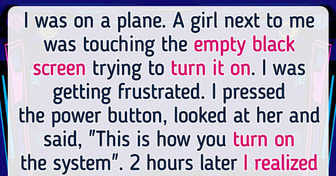My MIL Called My Son a “Lottery Ticket,” but I Got the Last Laugh
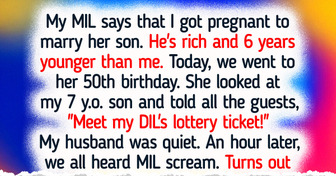
You might think falling into a black hole is as easy as falling into a giant pit. But boy, is it a whole different ball game! To actually fall into a black hole, you would need some incredible luck and a dash of wizardry. Moreover, if you were watching something fall into a black hole, you wouldn’t even see it! Why? Well, let’s try to understand the magic of physics. Falling into a black hole is really, really tricky. First of all, to even have a chance of doing this, you would need to aim perfectly and start your journey from very far away. It’s like trying to hit a tiny target from a long distance.
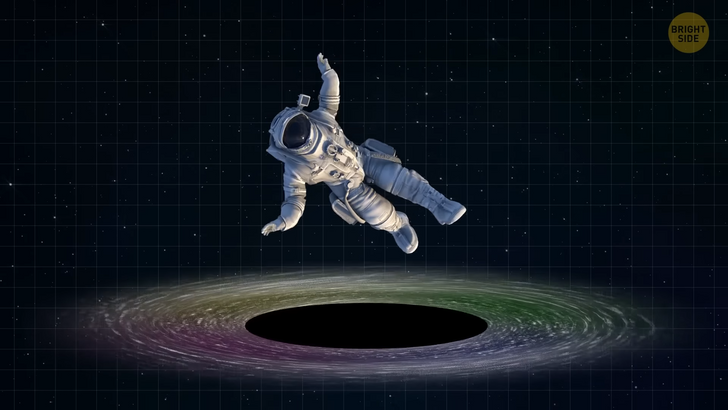
That is because black holes exist within galaxies, which are filled with other objects like stars, planets, and gas clouds. These objects have their own gravitational forces that can influence the path you need to take. It’s like you have to carefully navigate through the room, avoiding bumping into others or getting pulled off course by their movements. In a similar way, when falling into a black hole, you need to navigate through the influences of other celestial objects.
As you get closer, things get even more complicated. Making even the tiniest change in direction would require a tremendous amount of energy that you wouldn’t be able to generate. It’s like trying to steer a spaceship with no fuel left. This is because the black hole’s gravitational pull is immensely strong. Once you pass the point called “the event horizon”, there’s no coming back. You wouldn’t be able to control anything.
Now, even if you somehow managed to get on the right path and avoid all the obstacles, there’s still a dangerous situation waiting for you. The intense heat and energy around the black hole, called plasma, would fry you as you get closer. So, you would need some impossibly strong protection to even get close to it! But not only is it nearly impossible to fall into a black hole... It’s also impossible to see someone falling in it! Why? Let’s find out.
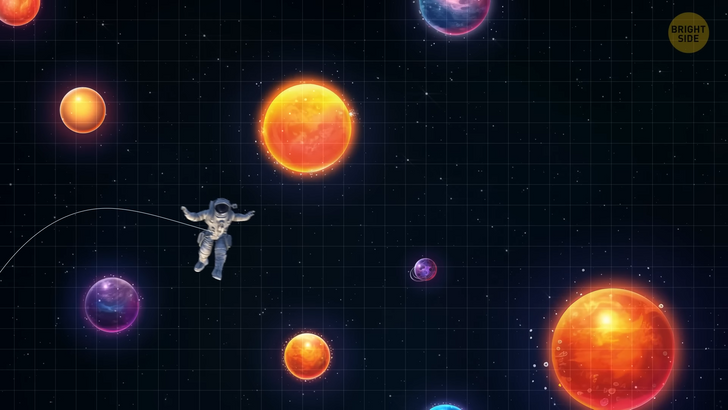
Imagine you’re standing far away from a black hole, watching something getting closer and closer to the event horizon. As this thing, let’s say it’s a spaceship, falls into the black hole, two very strange things start happening. First, the color of the spaceship will change. You see, the gravity near a black hole is incredibly strong, much stronger than anything we experience here on Earth. This intense gravity affects everything around it, including light.
Now, light has this fascinating property where it carries energy. But when light gets close to a black hole, the powerful gravitational pull starts sapping away its energy. Kinda like stealing it, making light “weaker”. And you know how when you look at a beautiful sunset, the Sun appears to be this warm, reddish-orange color? Well, that’s because when sunlight travels through our atmosphere, it scatters and loses some of its higher-energy, bluish colors, leaving behind the redder ones. So, when light loses energy, it tends to shift towards the red end of the color spectrum.
The same thing happens near a black hole! The light from the spaceship loses energy due to the black hole’s strong gravity. So, the spaceship, which initially had its own color, starts looking redder and redder as it gets closer to the black hole. It’s as if the black hole is casting its magical spell, changing the color of the spaceship itself! The second weird thing is related to time. According to a theory of general relativity, gravity can mess around with time itself.
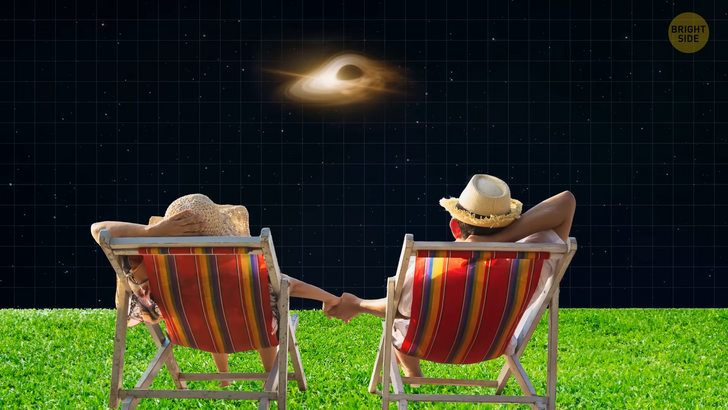
And it works in a very strange way, because none of you — not you, not people on board a spaceship — will feel this change. For you, an observer in this scenario, time is flowing just like it always does. You’re just sitting there, sipping your space lemonade and watching the spaceship’s journey. For people on a spaceship, things are the same. Their watch ticks away at a regular pace, and they go about their day as usual. But objectively, for you, it would be like watching a spaceship fall in slow motion. It will seem to you that it has been falling into a black hole for weeks or even years. You may turn 80, and the spaceship is still out there! Crazy, right?
Now, if time slows down for the spaceship, it means the light it emits also slows down. So imagine someone on that spaceship flicking a flashlight on and off. But because time is moving so slowly, the light coming from the flashlight also moves in slow motion. It takes ages for each burst of light to reach your eyes! You’ll be watching a spaceship as if you’re watching a video in super slow motion. And when light takes longer to reach your eyes, it becomes weaker and dimmer, just like a fading star. So, as the spaceship gets closer and closer to the black hole’s event horizon, not only does it start looking redder, but it also appears dimmer.
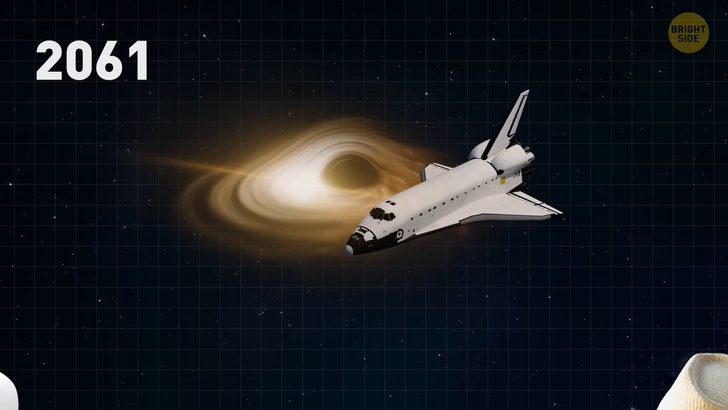
So it becomes harder and harder to see the spaceship as it gets closer to the black hole. It slowly fades away, like a disappearing act on the grandest stage of the universe. Pretty mind-boggling, isn’t it? But that’s all about you, the observer. And how are people on board doing? What do you actually experience when you fall into a black hole? As you get closer to the black hole, something really weird starts happening. The gravity near a black hole is so powerful that it stretches and warps everything around it. So, the difference in gravitational pull between your head and feet becomes significant.
This difference creates a tidal force, which stretches your body like a long, thin shape. It’s a process that’s scientifically called “spaghettification.” Essentially, you would be stretched into a human noodle! Being turned into spaghetti might sound fun for a pasta lover, but it’s definitely not so great for an astronaut. Meanwhile, colors around you begin to warp and distort, creating a dazzling light show. It’s like riding a roller coaster through a rainbow tunnel. Twists and turns, flashes and sparks — it’s an exhilarating, mind-bending experience! And then what happens to you depends on the type of black hole.
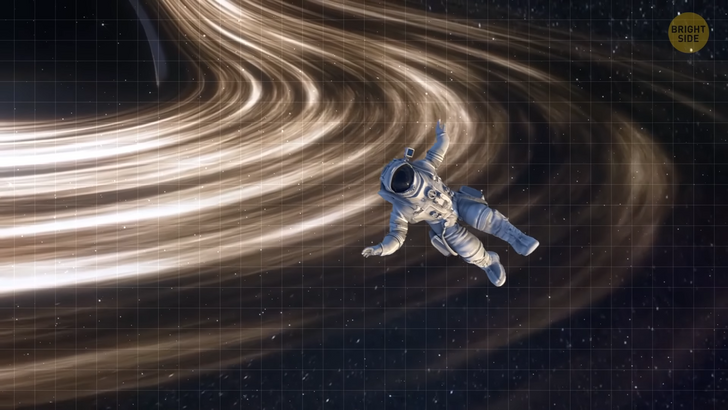
First, we have classical black holes. These are black holes that exist forever. If you fall into this black hole, it would take an incredibly long time to reach the center. The center would keep getting closer and closer, but you would need an almost infinite amount of time to reach it. So, it would feel like your journey would never end. And then we have evaporating black holes. These black holes can evaporate over time due to a process called Hawking radiation. It’s just like the ice cube melting away. These black holes have a limited lifespan. And it’s basically impossible to fall into one of them.
As you approach the evaporating black hole, you find yourself hovering near its edge, the event horizon. It’s like being stuck at the entrance of a super cool amusement park. But guess what? This amusement park is shrinking! The black hole is evaporating, and as it does, the event horizon gets smaller and smaller. So, you stay right at the edge, tracking its every move. But you will forever stay in this event horizon without ever crossing it.
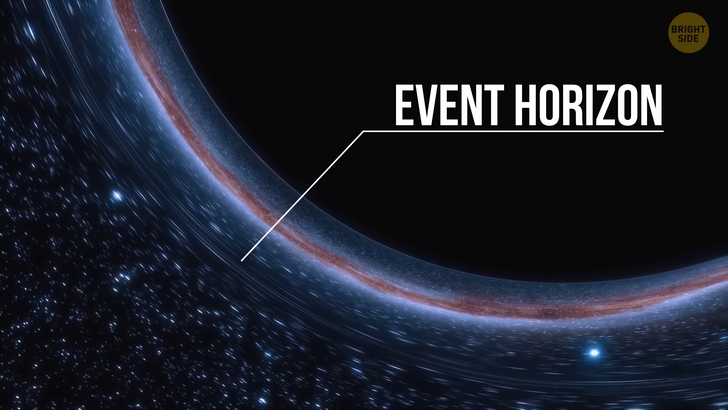
But remember, once you pass the point of no return, there’s no way back. You’re on a one-way ticket to the mysterious heart of the black hole — the singularity. At the singularity, everything goes bonkers. Our current understanding of physics goes haywire, so it’s a bit like entering a magic show. What happens once you reach singularity? Is there anything on the other side of black hole? We have no idea. It’s a big mystery for us. But maybe we’ll figure this out someday. So, my friend, it’s best to admire black holes from a safe distance and let your imagination soar with the incredible wonders they hold. Just remember to keep your pasta on your plate and not near these cosmic spaghetti-makers!




